Bagged sugar confectionery is still flying, but more sales could be had by adding better-for-you options and dedicating space to kids’ sweets
From lollipops and liquorice laces to bon bons and bubble gum, there’s something for everyone at their local c-store. Whether it’s school kids searching for a sweet snack, or pensioners with a penchant for a pick-me-up, the sweet aisle is sure to bring a smile to customers’ faces.
The continued trend of shoppers buying little and often, and the impulse nature of sugar confectionery, mean that convenience stores are ideally placed to capitalise if they are willing to invest in the category. Candy is worth £445m within the convenience sector (IRI 3 March 2018) and it seems consumers simply can’t get enough of the sweet stuff.
Sugar confectionery is a massive seller at St Mary’s Supermarket in Southampton. “From three years ago to now, sales have doubled,” says owner Meten Lakhani. He concedes that prior to a refit in 2015 he allowed the category just three metres, whereas now it has 16 metres. “But even so, I think sugar confectionery is doing well – we’ve seen an increase of about 10% this year,” he says. “The range is good and they are located just as people enter the shop. If you’re standing in front of so many sweets, something is going to take your fancy.”
Hooton’s Best-One in Golborne, Wigan, is also a hot spot for candy lovers. “Our six metre-long counter is in-cut and I’ve got four rows of bags all along the front, about 50% of which is sugar confectionery,” says owner Gareth Hooton. “I have a fixture on the wall, too, with Bonds bags. We can’t keep the category filled up fast enough; the bags are flying off that quick. It’s amazing how fast they sell.”
It’s a similar story at Premier Eldred Stores in Orpington, Kent. “Our sugar confectionery sales do really well all year round,” says store manager and Sales Assistant of the Year 2015 Anita Nye. “We sell more bagged sweets than bars of chocolate. We could just keep adding to it and it would sell.”
Sweets are a focal point for Londis Culverhay in Cricklade, Wiltshire, which has created The Candy Corner in-store, comprising a pick and mix fixture, pre-packed confectionery, plus a selection of jars with boiled sweets and bon bons. “It’s a good category for us,” says owner Hema Brar. “We’ve always wanted to be a family store that everyone in the family could gain from – a treat for the kids, pick and mix for adults, or boiled sweets for a road trip.”
Kay Patel, who owns five stores in East London, including the 2018 Best Small Store Best-One Wanstead, does such a roaring trade in sweets that he has introduced his own Sweet Shop range, with bespoke printed labels.
The range comprises traditional sweets, such as kola cubes, chocolate limes and aniseed twists, and Kay has been experimenting with different pack formats, such as pot and bags.
“We’ve been doing the pots for six months and bags for two or three years. We switch it over now and again [between bags and pots] because one is more convenient for cars and the other for purses,” says Kay.
“Pots work equally as well as bags. I think we’ll do both now as customers who were buying the bags before are complaining that they can’t fit them in their handbag or pocket.”
Confectionery bags
Branded bags have also proved to be a winning format. Kay claims his biggest sellers are £1 packs of Swizzels Squashies. “They’re huge – we started off selling two flavours, but we’ve listed four now because it’s in constant growth,” he says. “They promote it every second month, which helps, but even off promotion it really flies.”
Squashies is the fastest growing sugar confectionery brand in the UK marketplace, worth £36m, according to Swizzels, which claims that a pack is now being sold every second.
But, while the bags are popular, Kay resents the fact that he can’t get hold of a non-pricemarked version. “There’s an issue here,” he says. “Haribo give you the option of pricemarked (PMP) and non-pricemarked packs. We choose non-pricemarked and sell at £1.25, which is the recommended retail price, to make a bit more margin.
“But these Squashies come in the £1 PMP bag only, so when you sit it against Haribo, people will pick that up if there’s a 25p premium on the others. We get a better margin on Haribo. Off promotion, the margin on pound bags can be as low as 20%, which is ridiculous. By selling non-pricemarked, I get a 40% margin. My cost base is going up, so I have to squeeze money from somewhere.”
Meten also tests out different price points. “Haribo are definitely best-sellers; Starmix, Supermix and Tangfastics all do well. We sell £1 pricemarked 180g bags and smaller 140g non-pricemarked bags, which we also sell for £1. Sometimes people just want a smaller bag. They aren’t looking at the price.”
He claims that the £1 pricemarked packs are central to the success of bags. “Starburst and Fruit Pastilles bags are also big sellers, so are Squashies, all pricemarked at £1. At the £1 pricepoint it sells all day long. It’s very important to have a pricemark, or price point it yourself – we’ve just put a whole shelf together and everyone knows that the section is £1.
“If you go a little over a pound, it makes a big difference to sales. If a product was £1.05 originally and you put it up to £1.10 it wouldn’t make much difference to sales, but if it’s a round pound and you put it up to £1.05, people will notice.”
Despite most bags being priced at £1, Meten still claims to make a good margin overall. “For us it’s a big seller and there’s a good profit margin – 30%. This is an extra purchase – they’ll buy what they came in for and then they’ll pick up a bag of sweets.”
Gareth is also a fan of £1 pricemarked bags. “Everything pricemarked at £1 seems to be the way forward,” he says. “People can’t get enough of Haribo and Maoam £1 bags. Haribo Tangfastics and basically their whole range is a bestseller with kids and adults.
“I also have a big selection of Bonds bagged sweets, which goes down well with the adults. Blackcurrant & liquorice, pear drops, sherbet lemons and bon bons are popular. They’re in £1 pricemarked bags, too. We look at it as an easy £1 spend.
“Margins are generally 30-40%. The pound bags are very strong as they reflect value.”
Pound bags are all the rage at Welcome Marchwood in Southampton, too. “We have Haribo Starmix, Supermix and Tangfastics flashed at £1 permanently displayed in the queuing system,” says manager Simon Lee. “They absolutely fly out. I also have Maynards Wine Gums and Wine Gums Mocktails, Jelly Babies, and Drumstick Squashies on the queuing system. I’ve been doing this for the past 18 months and it really is the impulse purchase while they’re queueing. Sales of sweets have gone up 25% as a result.”
Pricemarked packs are great value for money as they allow for the gap between premium and entry-level pricing to shrink, encouraging trade up, says cash & carry Hancocks.
Pricemarking adds loyalty and trust and instils that purchase mentality into consumers, states Mark Roberts, trade marketing manager UK at Perfetti Van Melle. “It’s still something that is growing and will continue to grow because it adds discipline.”
Maynards Bassetts expands Wine Gums portfolio
Not content with having the UK’s bestselling candy bag – Maynards Bassetts Wine Gums 190g (Nielsen MAT 24 February 2018) – the folks at Mondelez International have opted to add another variant to the mix.
Wine Gums Mocktails sees non-alcoholic strawberry daiquiri, pina colada and cuba libre flavours added to the range.
Mondelez says Wine Gums Mocktails received an outstanding rating in consumer concept testing [Nielsen, Idea Screener, 11 May 2016] and aims to drive incremental sales within the younger adults segment of the market, providing a further growth opportunity.
Susan Nash, trade communications manager at Mondelez International, says: “Confectionery is the most impulsive category in convenience (CTT 2017), so availability and display are really important. The main confectionery fixture should be really easy to shop, in a highly visible location.
“Follow the basics: put best-sellers in best-selling locations; group products by format; ensure shelves are fully stocked; and use manufacturers’ point-of-sale material to highlight products where possible.”
Better for you
Another key area of growth that Roberts urges retailers to embrace is better-for-you (BFY) sweets. “The sugar-free/reduced-sugar market is certainly an area of growth,” he says. “It’s up 20%, but it’s still small. It represents only about 3% of the market within convenience. We think it’s an area that really has a lot more potential than is currently being seen.
“In supermarkets, it’s getting much bigger. They stock a much bigger range. We see that sales within the BFY category are incremental – Kantar states 73% of sales are incremental – either new people coming into the category, or people buying on top of what they were buying already. When I look at the supermarket data, the incremental growth of the sugar-reduced and sugar-free category offsets the decline of some of the other singles sales. It’s a great opportunity to drive penetration and frequency.”
The company has been busy ensuring that it has a selection of BFY options within its portfolio. Last year saw the introduction of 30% less-sugar chewy bags of Fruit-tella, followed by sugar-free Fruit Foams, Fruit Gums and, more recently, Fruit Drops. The brand is now set to launch two new reduced-sugar chew packs containing seven sweets in best-selling summer fruits and strawberry countlines. It has also introduced a pricemarked version of the reduced-sugar strawberry chews.
Roberts claims that reduced-sugar products focus on family snacking or treating, whereas sugar-free sweets are for adults looking for a healthier lifestyle.
“Within the total BFY confectionery market, we’ve added £3m – about 50% of the growth coming from the market,” he says.
He claims that introducing more BFY candy will give customers a better selection. “Retailers need to look at the breadth of their range and make sure they are offering that choice. Maybe instead of going down the path of flavour variants, it’s about looking at what their point of difference is.”
Kay is open to the idea. “We’re not always looking for new flavours, especially when they’ve already got 30-odd lines in their run, but if it’s got something special about it, then we’d bring it in because it’s a point of difference.”
He has already adapted his Sweet Shop range to meet rising demand for sugar-free products, although he has had to stray from the winning formula of round pound pricemarking as a result. “People are becoming more and more health conscious,” he says. “All the sweets we sell in pots are £1 apart from four sugar-free pots, which sell at £1.29. At least this shows we have a healthy option. It does sell, although not as fast as the full-sugar version. Maybe the pricepoint doesn’t help, but it costs us more to buy.”
When it comes to pre-packed products, he says that manufacturers need to tailor their reduced sugar and sugar-free offerings to c-stores in order to make it work. “We’ve tried Werther’s Original sugar-free sweets in the past, but the box they came in was too big. It always went out of date. If they look at it again and make it pricemarked then it might be better.
“All the companies are finding their feet with the sugar tax; they’re all scrabbling about trying to do something pre-emptive before the government comes knocking on their door. You can’t blame them. The health lobby is there – they got what they wanted with cigarettes and now they’re moving across the store.”
Simon has also tried selling reduced-sugar sweets. “We sell Randoms 30% less sugar, but people tend to prefer the full-sugar products, to be honest. I’d definitely consider selling more sugar-free or reduced-sugar products, though, as that gives people a choice at the end of the day.”
However, Anita claims that convincing some of her younger customers to try BFY sweets is an uphill battle. “Kids don’t like sugar-free and reduced sugar,” she says matter-of-factly. “We’ve tried some of them, but they’ve gone out of date. I think a lot of it is education. The younger kids are being brought up with sugar-free products, so they’re used to it, but the 11-, 12- and 13-year-olds aren’t.
Suppliers react to demand for soft chew bags
Soft chew hanging bags are proving hugely popular, worth £97m and in 5% growth (IRI Total Marketplace data 52 weeks to 25 February 2018). Now family-run confectioner Swizzels is after a bite of the action with Choos.
Available in two variants, Drumstick Choos provide five double flavour combinations including peaches & cream and strawberry & banana, while Refreshers Choos offer five fizzy flavours with the unique sherbet centre, including pineapple and apple.
The soft chewy texture is in keeping with consumer demand for softer products, claims Swizzels, which continues to perform well in the confectionery market, with sales up 18% year on year.
Emma Herring, NPD brand manager at Swizzels, says: ‘‘We know cash-conscious consumers are on the rise, and value-for-money sugar confectionery has never been in such high demand. We are delighted to have entered this category with our £1 PMP Choos and we hope to contribute significant further growth.”
Tangerine Confectionery is also treating consumers to a softer bite. Having already seen success with Softies in Fruit Salad and Refreshers variants, which grew ahead of the market up 25.7% year on year, the firm has unveiled Barratt Dip Dab Softies. Available in both a PMP and non PMP option, the products are gelatin-free and 38% lower in sugar content than comparable products.
“People feel like they’re being told what they can and can’t eat. I think they [manufacturers] have got to tread carefully because otherwise people feel they are in a nanny state. If suppliers did product sampling that could help – if something’s free they’ll try it and they might actually like it. If they did try it I think they’d be quite surprised that there isn’t really much difference in taste.”
Hema is in favour of BFY confectionery. “It’s about embracing the increased awareness [of sugar], but enabling customers to have that choice and make decisions for themselves,” she says. “We pride ourselves with having a selection with all our ranges.”
She agrees with Anita that support from suppliers will help reduced-sugar sweets to take off. “I definitely think there has to be a combined effort and responsibility from all parts. It’s not just down to the retailer,” she says. “As more products come through, advertising campaigns will play their part. The more informed parents become about it, the more they’ll talk to their kids about it. It’s definitely a growing market. It’s the likes of Haribo that can potentially get products out there that are reduced sugar.”
Haribo is on the case with its Fruitilicious 30% less sugar gummies, which launched in January. Within the category’s top 25 selling hanging bags, Fruitilicious currently has the lowest sugar content per 100g, but still delivers on taste, claims the firm, noting that in recent blind taste tests with Haribo fans, 98% loved or liked Fruitilicious.
The company advertised the product on TV in April as part of a multi-million pound campaign, which also includes sampling.
Gareth has seen success with the product. “I’ve had the Haribo Fruitilicious bags in and they’ve sold quite well, we just put them alongside the other Haribo lines.”
He thinks that this area has room to grow. “There will be interest in sugar-free sweets, that’s the way it’s going down,” he says. “I’ll be introducing more reduced-sugar and sugar-free lines. I think it’s the way forward as everyone’s getting keen to reduce sugar now thanks to Jamie Oliver.”
Starburst ventures into gum
Mars Wrigley Confectionery is increasing Starburst’s £18.5m portfolio with the launch of Starburst Chewing Gum.
Fruity Mixies, Strawberry Cubes and Red Berry Sticks “bridge the gap between gum and candy”, claims the firm.
After the company’s research highlighted that over the past 10 years the gum category has seen a 20% decline in penetration from the younger generation (TGI Sourcing 2016), the launch of Starburst Chewing Gum is set to appeal to 15- to 24-year-olds, where fruit gum significantly over-indexes. The firm predicts that it will grow gum penetration by 3%.
Featuring three flavours – strawberry, apple and bubblegum – Starburst Fruity Mixies recreates tastes consumers are familiar with from the confectionery category. Available in a 24-pack (rrp 49p), a 48-handybox (rrp £1) and 100-bottle (rrp £2), the range meets the needs of core consumption occasions, while hitting all key price points.
The mints and gums category has seen an increased consumer demand for a range of fruit flavours, adds Ferrero customer development director Levi Boorer. Tic Tac fresh mint, lime & orange, strawberry fields, and mint rush flavours are currently on TV as part of a £1.5m campaign.
Starburst is also expanding its offering with a Very Berry variety, combining strawberry, raspberry, blueberry and cranberry flavours.
It is available in single (45g), hanging bag (150g) and sharing pouch (192g) formats, including PMP options. Starburst flavour variants have proven to be 89% incremental to the brand, and Very Berry is projected to drive nearly £4m in retail sales, claims the firm.
As consumers are increasingly aware of BFY options, confectionery products with reduced sugar are important for retailers to stock, concurs Tangerine Confectionery. “Our new Dip Dab Softies will be 38% lower in sugar content than other similar products,” says Russell Tanner, marketing and category management director. “Tangerine will also be releasing NPD during 2018 which will contain up to 20% less sugar than comparable sweets on the market and expanding its gelatin-free range, which will also result in reduced sugar.”
The focus on sugar-free and reduced sugar is being driven by parents and retailers rather than kids, claims Bazooka. “What keeps kids coming back is great taste, and few of the health and wellness products deliver on these key criteria,” says David Holt, head of UK sales. “Having said that, we acknowledge that this is a growing focus and many of our products are under the 100-calorie guidelines and we are launching Sugar Free Bazooka Bubble Gum and Mega Mouth to offer the range and choice to keep both mum and child happy!”
Turkey’s largest soft candy producer and exporter Kervan Gida has also begun developing reduced-sugar lines for the UK market. “We’ve done a lot of work on introducing 30% less sugar in a range of gummies, we’re just putting together the final details of it,” says Stuart Johnston, managing director at Kervan Gida UK, which distributes Bebeto- and Dexters-branded kids’ confectionery.
However, he is quick to add that demand for traditional sugar confectionery remains strong. “We certainly don’t see a move towards fewer purchases because of the sugar tax. Sugar confectionery is stronger in convenience and discount than other sectors at the moment – they are the two areas we see the most growth in.”
The power of sour
From Juicy Drop Pop Xtreme sour to Seriously Sour Flip n Dip Push Pops, Bazooka Candy is setting tongues tingling with a host of sour launches across its portfolio.
Tangerine Confectionery has also gone down the sour route with the launch of a sour apple flavour Dip Dab that turns tongues green.
“The refreshing new flavour has been designed to provide for the increasing demand for sour-tasting confectionery, which has grown by 213% in the past year,” says marketing and category director Russell Tanner.
Kervan Gida has also witnessed kids’ continued love of all things sour. “We’re doing a lot more super-sour stuff, that’s what the demand is from teenage boys,” says Stuart Johnston, managing director of the company’s UK subsidiary. The firm’s Dexters range includes Sour Dummies, Sour Faces, Sour Mix, Sour Melons and Sour Worms.
Kids’ sweets
Johnston agrees with Bazooka’s Holt that children are far more interested in the taste of a product, rather than its nutritional credentials. “Everyone seems to want blue raspberry, which is unusual in this day and age when there is high demand for natural colours,” he says. “It is our biggest-selling flavour. It just seems to get stronger and stronger.”
Exciting new products that have curious flavours or textures stand out on shelves, claims Hancocks. “An example of this would be one of our best-sellers, the Crazy Candy Factory Mini Gumball Machine (rrp £1) or Ice Cream Dips (rrp 69p),” says purchasing director Jonathan Summerley.
He advises convenience stores to take full advantage of their independent status to shop around and source the most innovative sweets. “There is a demand for multiples to stock the large brand names and fill their shelves with the likes of Cadbury or Nestlé. However, conveniences stores have the freedom of choice to stock smaller artisan brands, an added bonus given that shoppers are now switching to cheaper own label,” says Summerley.
Hancocks’ own Crazy Candy Factory brand has seen a 35.4% increase in sales value between 2016 and 2017, while maintaining low prices and up to 50% POR on all products within the range, it reports.
Mentos freshens up mint category
Perfetti Van Melle is targeting the on-the-go refreshment market with sugar-free Mentos Stay Free.
Available in peppermint and menthol eucalyptus, the hard-candied mints are naturally sweetened with stevia, meaning each sweet contains only five calories. The mints come in the popular flip-top format and have an rrp of 75p, or 50p on promotion.
Following the success of last year’s Say Hello campaign, the £21m Mentos brand will receive a £3m marketing boost in 2018.
Perfetti Van Melle marketing manager Mark Roberts says: “While the category is seeing decline, we are focused on driving more penetration in the market, and campaigns such as Say Hello help deliver this. We saw strong results last year and are hoping to replicate this with a full calendar of activity.”
Variety is at the heart of Welcome Marchwood’s sugar confectionery offer. “We have a one-metre dedicated space of seven shelves for children’s confectionery. Prices start at 10p and the most expensive sweet is £2.20,” says Simon. “And we have a 6ft Original Gourmet Lollipops tree; they’re really popular. We have every flavour under the sun: strawberry; banana; candy; grape; watermelon; lemonade; tropical; cola; bubble gum etc.”
It’s not just lollipops that get customers talking; there are plenty more weird and wonderful treats in the children’s zone. “We stock Fudgy Wudgy’s, Miniature Wine Gums, Sour Belts, Peppa Pig Marshmallow lollipops, all sorts of Pez gadgets, Trolli Gummi Pizza – the more unusual products. Novelty sweets that act as toys do well, such as Funny Face Light Pops, Push Pops and Toxic Waste. Big Baby Pop and Ice Cream Dips and Paint Splash are some of our most popular items.”
He also has a 6ft section of small bags, supplied by Innovative Bites. “We sell dolly mixture, strawberry lips, strawberry laces, bubblegum mushrooms and jelly babies at three for £1.”
He says that stocking a big range and updating it regularly is vital. “We place an order every two weeks. I’ve just placed a 140 case order, it’s really popular. We try to rotate the stock and try new lines.”
Kids are also spoilt for choice at Hooton’s Newsagent. “We have a high school and primary school both about 200m away,” says Gareth. “They come in morning and night on the way to and from school.”
The store dedicates a one-metre fixture to kids’ confectionery in the middle aisle. Sherbet Straws, Vimto chew bars and Vimto Rippa, Toxic Waste products, Brain Lickers, Jawbreakers all sell well. “We’ve probably got too much to be fair,” says Gareth. “It’s good to have lots of choice, though, because people know the availability is going to be there and there’ll be a good selection.”
Candy aimed at children is a big draw for Kay’s Global News store in Wanstead. “We have three- metres of old-fashioned pocket-money sweets, from sherbet dips to Bazooka,” he says. “We have two schools quite close by and we sell tons of kids’ sweets. It’s a destination for kids in the morning and adults come in and fill up bags of it because we have everything.”
Kids’s sweets are a big seller at Eldred Stores, too. “It’s the same children – from 11 upwards – in here every day,” she says. “The majority come in in the evening as well and buy more sweets. It’s quite frightening to see how much money they spend on sweets every day.”
She claims that sales can peak and trough on certain lines, so it pays to watch out for trends. “They went through a phase with the Toxic Shock sweets. They come in waves, especially when there’s a new intake at the senior school.
“Towards the end of last year the BeanBoozled jelly beans were really popular. You had two jellybeans in each colour – one a nice flavour and one horrid, such as vomit and dog food. Everyone was clamouring after them and then they all got bored with it.”
Hooton’s has also seen its fair share of trends. “Tongue painter lollies were a must-stock a few months ago,” says Gareth. “They were queuing out the door for them and buying 20 at a time, then they fizzled out. But every year you get a new batch of kids, so the trend tends to pick up again.”
Johnston says kids even challenge each other to eat certain sweets. “If you go on YouTube you’ll see young lads racing to eat a bag of Bebeto as fast as they can,” he says. “It’s a peer thing.”
Winning with kids’ confectionery is about “edible entertainment”, according to Bazooka Candy. Holt explains: “Our brands capture kid’s imaginations. Brands such as Juicy Drop and Push Pop also deliver great cash rate of sale for retailers, adding value back into the category which has an average selling price of 33p.”
Juicy Drop and Push Pop delivered 20% and 22% growth respectively last year, Holt says.
“Successful retailers are those who offer choice and create destinations in store for kids’ sugar lines,” continues Holt. “Being able to create a bit of theatre and fun in a store, which is merchandised well, makes it easy for kids to find what they are looking for.
“Offering a fantastic shopping experience to these consumers will only make them want to come back and explore time and again.”
An unmissable display of bags at enticing price points is undoubtedly a winner for c-stores, whatever their customer base. And if you are located near a school, then it may well be worth dedicating not only space, but also time to kids’ confectionery and seeking out exciting products that offer both a treat and entertainment.
And with an ever-increasing awareness of healthier options, sugar-free and reduced-sugar candy needs to be visible. “You need to flag up that you have these sugar-free or reduced-sugar offerings,” says Roberts. “It may encourage more impulse purchases because they are stocking a product that consumers may not have expected. It’s about giving people choice.”
Walkers Nonsuch adds salty variant
Walker’s Nonsuch has jumped on the salted caramel bandwagon and launched a twist-wrapped toffee made with whole milk, butter, natural caramel flavour and Anglesey sea salt.
Director Emma Walker says: “Salted Caramel has become one of the nation’s favourite tastes over the past 12 months. Combined with our creamy toffees it gives a taste and chew second to none.”
Available in 150g sharing bags (rrp £1.50), 1.25kg gifting jars (rrp £10) and 2.5kg bulk bags, the new variety was developed by Jonathan Rae, grandson of the late Ian Walker.
This year also welcomes the return of the firm’s Nutty Brazil Toffees in 150g bags, after a poor crop of brazil nuts in 2017 forced production to halt. Each creamy toffee is topped with nibs of premium midget brazil nuts.
In addition, the firm has just introduced Double Dipped Chocolate Toffees. The products come in 135g bags for everyday eating, 900g gifting jars and 2kg bags for pick and mix opportunities.















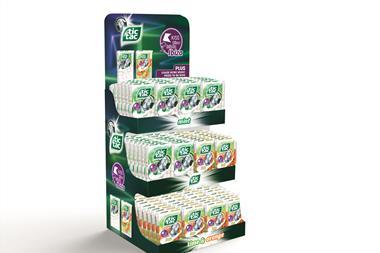
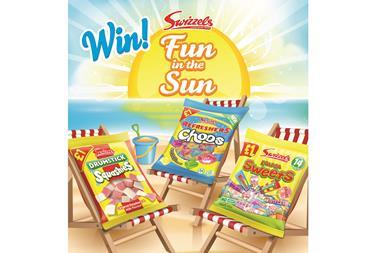
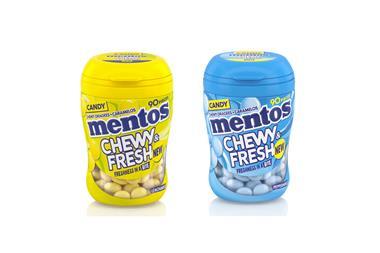
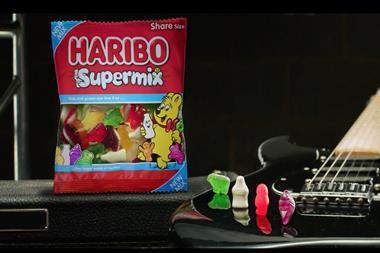
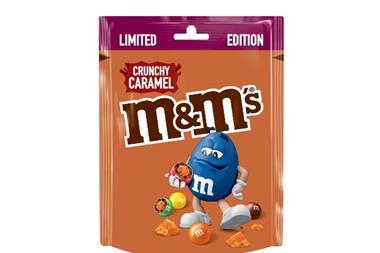
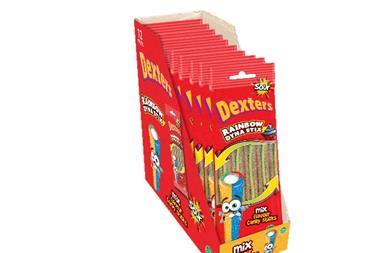






No comments yet